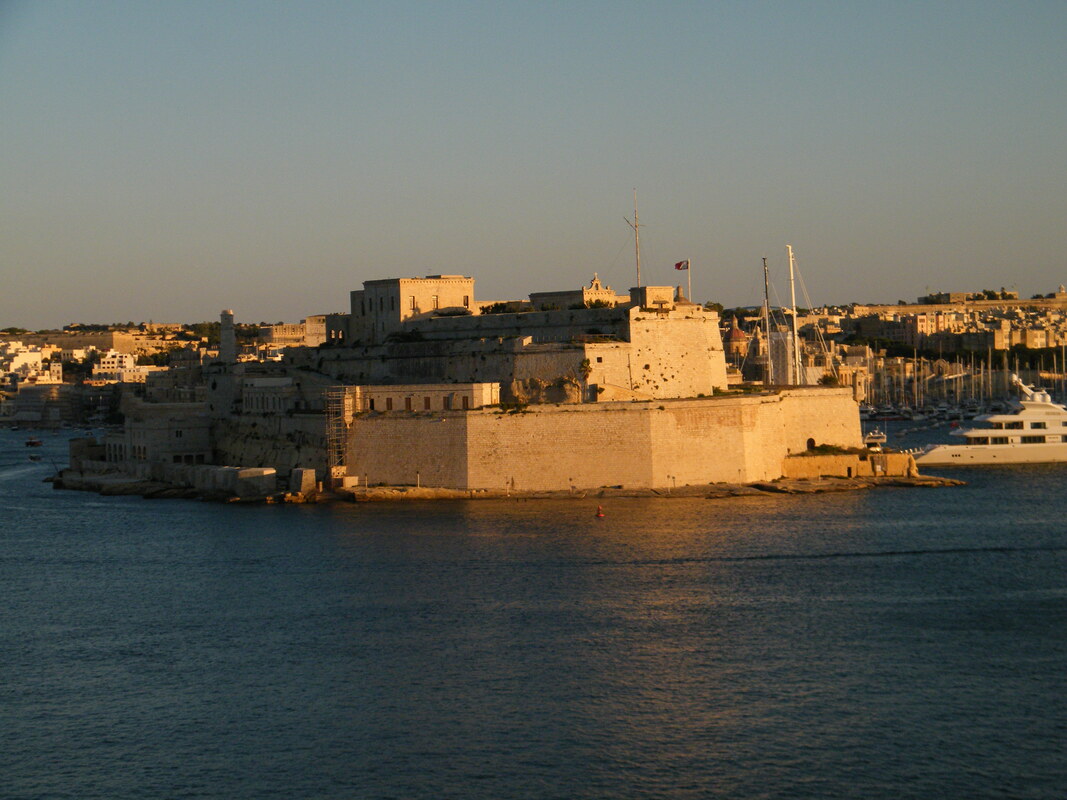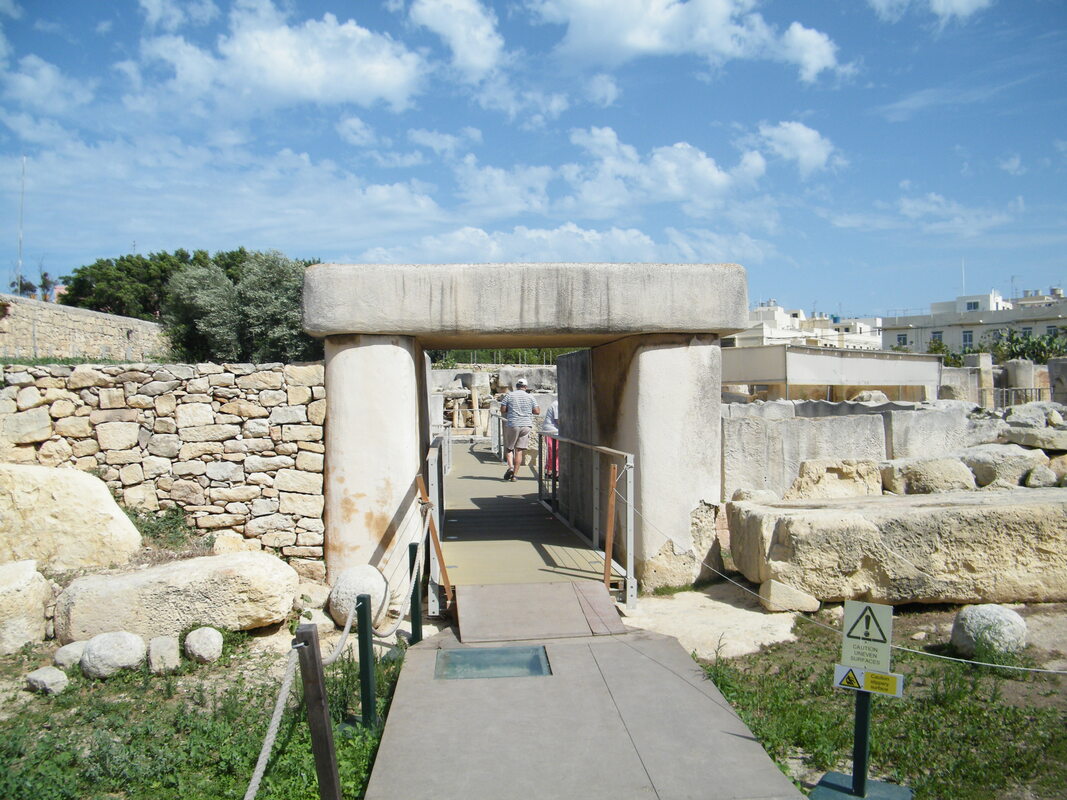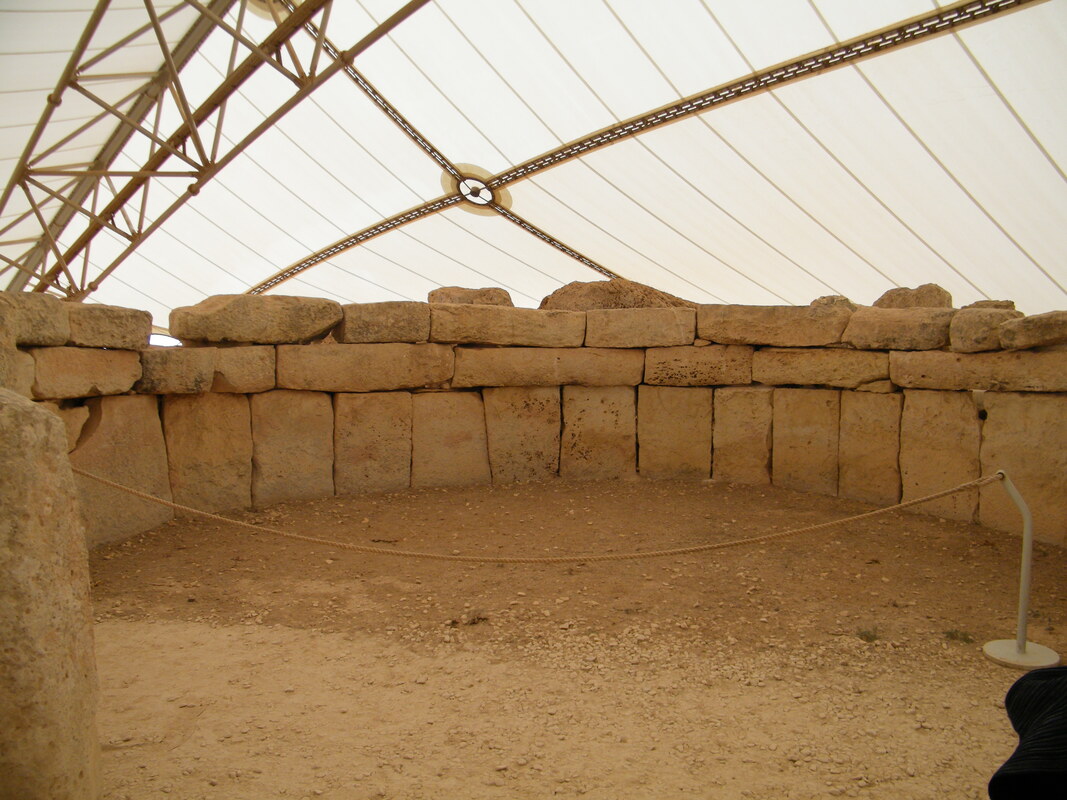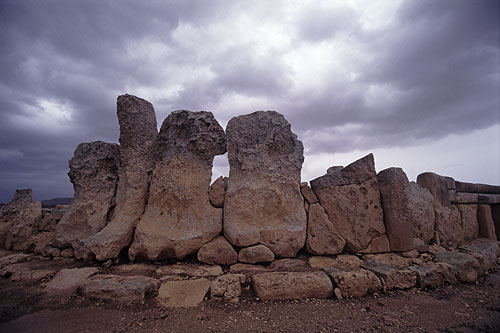|
My 2012 autumnal research sojourn took me to Malta, the jewel in the heart of the Mediterranean. From frosty windscreens in the morning in Scotland to fresh croissants, coffee and ice-cold beers in temperatures that still stretched into the thirties even in early October. Sarah and I chose it as our destination for its rich and varied history: Neolithic temple cultures, war-like eastern invaders, Phoenicians, Greeks, Romans, Arabs, Byzantine, Medieval Knights, Napoleonic forces and Brits had all landed on the shores of this island throughout the last six thousand years. This was an irresistible melting pot of culture, ruins and legend that I had to experience. However, given this rich history and the diminutive proportions of the three islands that make up the modern day Republic of Malta, I wasn’t quite sure what to expect – would there be a patchwork of history side by side or would one stratum of the past shine through all the others? Coming from the airport (on the 120+mph bus that took us/catapulted us to our digs in rocky Mellieha) the arid gold and terracotta landscape is reminiscent of North Africa or perhaps Turkey, with numerous flat-roofed limestone and whitewashed apartment blocks dominating the coastline. Soon though, we were whizzing past towering battlements and ornate cathedrals that roared of their medieval and renaissance roots. I was hoping that a few miles on and I would be stepping even further back in time, seeing crumbled Roman villas, temples and forts. However, these sights did not materialise. It seems that you have to dig a little deeper to uncover the Roman, Greek and Phoenician foundations of this island. There is the Roman Domus, just outside Mdina, which serves as a fine example of a Roman villa. Then, far more carefully veiled, are the Byzantine frescoes in the catacombs dug into the island’s bedrock. Thanks to the excellent bus service that circles the island regularly, these sights, along with the bounty of Medieval fortifications in Valletta are there to be enjoyed (and we certainly did – they conjured a variety of story ideas that are still packed into our notebooks, still awaiting deciphering!). But it was the calling cards left behind by the very first inhabitants of the island, the temple builders, that really captured my imagination. Silent and solemn, these temples sent the proverbial shiver up the spine and really defined our trip. It began in the hustle and bustle of Valletta. The capital is thriving and you could be forgiven for thinking you were on the Italian mainland in places. After a wander through the broad streets and maze of stairways, we visited the Malta Experience (a must-see cinematic overview of Malta’s history) and then the War Museum and the Archaeology Museum. After that we headed southeast, to a suburb called Tarxien. Tarxien
It was approaching mid-afternoon when we left the temple complex and the sun was blazing overhead. The ice cream parlours beckoned. However, our interest piqued, we decided to stay focused. We forewent food and water and headed straight for the west of the island, to the site of the Ħaġar Qim and Mnajdra temples. Okay, we weren’t quite that disciplined. We actually stopped off at the harbour in Marsaxlokk for an exquisite seafood pasta lunch, accompanied by a chilled pint of ‘Cisk’ beer . . . aaah . . . sorry, got lost in the memory for a moment. Anyway, when we reached the west coast, the sky had darkened with scudding grey clouds, and droplets of rain pattered around us. The temperature seemed to have halved as a stiff breeze picked up. There, before us, the Ħaġar Qim temple sat perched atop the hillside framed by the choppy waters of the Mediterranean, as grey and sober as the sky overhead. There were no bustling suburbs, no chatter of passing locals, no humming of traffic. Just the wind whistling around us. Every gust echoed through the megaliths, telling the myriad stories of the ghosts who had once walked here. As a writer, I’m always trying to fine-tune my thinking so that everywhere I go, everything I do, I am open to inspiration. One piece of advice I have been given by many fine writers is to look at any scene before me, ordinary or not, and ask the question “What if...?” Ħaġar Qim and the Mnajdra TempleOn that grey afternoon, we picked through the ruins of the Ħaġar Qim complex in near silence. Idle chatter was the furthest thing from our minds as we gazed at this structure that had stood in solemnity like this through the ages. Then we ventured downhill to the dogged remains of the nearby Mnajdra temple right by the coast. A thousand questions flooded our thoughts. Who were these people? Were the builders of each temple site the same people and if so, why build two such magnificent structures so close together? Did they, as historians postulate, abandon the island, and if so, why? Did the war-like tribes from the east land upon Malta’s shores to find the temples empty, every apse offering up only ghosts of what happened to those who built them, the etchings in the limestone lending only indecipherable riddles? Many of the things we seen in Malta were intriguing and triggered much further reading and thinking. But nothing stirred my thoughts like those lonely temples on the hillside. I came away from that site with something so valuable; a rich jumble of answers to my question. What if...?
0 Comments
Leave a Reply. |
AuthorGordon Doherty: writer, history fan, explorer. My Latest BookArchives
March 2023
Categories |









 RSS Feed
RSS Feed